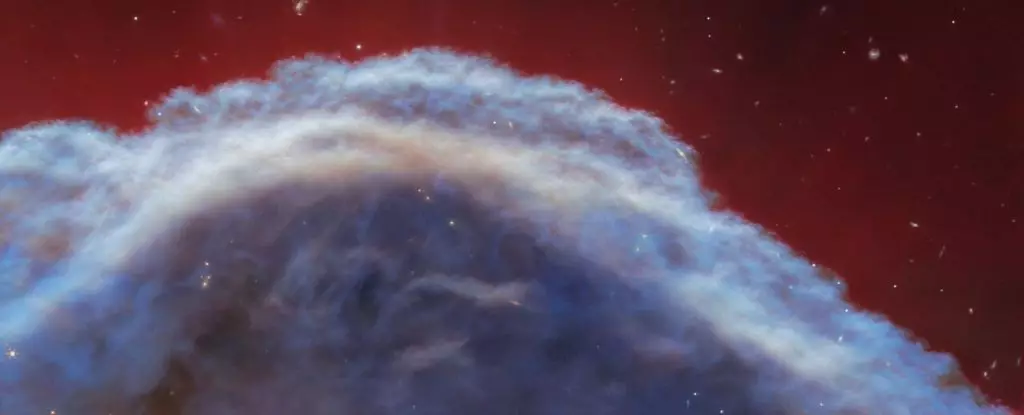The Horsehead Nebula, a distinctive cloud structure resembling a horse’s head, has been the subject of a fascinating new study. Recent observations using mid- and near-infrared filters from the James Webb Space Telescope have provided unprecedented detail of this remarkable space cloud located approximately 1,300 light-years away as part of the Orion molecular cloud complex. These observations have revealed intricate features such as tendrils and filaments, showcasing the intricate beauty of the nebula.
The infrared images have unveiled never-before-seen details within the Horsehead Nebula, shedding light on its composition and structure. The use of 23 filters allowed astronomers to track emissions from particles as small as 20 nanometers, including interstellar polycyclic aromatic hydrocarbons, scattered light from larger grains, and ionized hydrogen present in the cloud. This level of detail has provided a deeper understanding of the nebula’s inner workings and the processes occurring within it.
The Horsehead Nebula serves as an excellent laboratory for studying stellar nurseries, showcasing the process of star formation in action. The ‘horsehead’ itself represents a dense clump of material collapsing under gravity, containing small stars in various stages of formation shielded by dust. However, the intense radiation from nearby hot stars such as Sigma Orionis is causing photodissociation, breaking apart molecules and creating a photodissociation region (PDR) around the nebula. These processes play a crucial role in shaping the evolution of the nebula and the surrounding interstellar medium.
The recent infrared observations mark just the beginning of a comprehensive analysis of the Horsehead Nebula. Scientists are now focusing on studying the chemical composition of the dust and gas within the nebula, as well as the size and flow of dust grains based on light scattering. This detailed analysis will provide valuable insights into the evolution of dust in the PDR and further our understanding of how these stellar clouds change and evolve over time. Ultimately, this research will contribute to our knowledge of star formation processes and the dynamics of interstellar environments.
The recent revelations of the Horsehead Nebula through infrared observations have opened up a new realm of knowledge and understanding of this iconic space cloud. By delving into the intricate details of its composition, structure, and dynamics, scientists are paving the way for groundbreaking discoveries in the field of astrophysics. As technology advances and observational techniques improve, we can look forward to even more breathtaking insights into the mysteries of our vast universe.


Leave a Reply